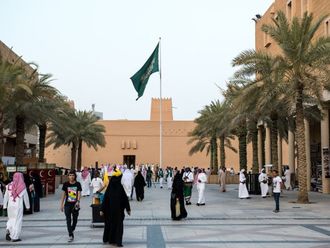Mexico City:
A decade ago, Ivan Zamora, 23, might have already left for the US. Instead, he graduated in May from a gleaming new university here, then moved on to an engineering internship at one of the many multinational companies just beyond the campus gates.
His days now begin at dawn inside the new Volkswagen factory a short walk away, and when he leaves at night, he joins a rush of the upwardly mobile — from the cavernous new Pirelli plant next door, an array of Japanese car-parts suppliers and a new Nivea plant on a grassy hillside.
“There’s just a lot more opportunity to study and to succeed,” Zamora said at the factory, surrounded by robots, steel, glass and young technicians.
Education. More sophisticated work. Higher pay. This is the development formula Mexico has been seeking for decades. But after the free-market wave of the 1990s failed to produce much more than low-skilled factory work, Mexico is finally attracting the higher-end industries that experts say could lead to lasting prosperity. Here, in a mostly poor state long known as one of the country’s main sources of illegal immigrants to the US, a new Mexico has begun to emerge.
Dozens of foreign companies are investing, filling in new industrial parks along the highways. Middle-class housing is popping up in former watermelon fields, and new universities are waving in classes of students eager to study engineering, aeronautics and biotechnology, signalling a growing confidence in Mexico’s economic future and what many see as the imported meritocracy of international business. In a country where connections and corruption are still common tools of enrichment, many people here are beginning to believe they can get ahead through study and hard work.
Zamora’s new job, for example (he was hired by VW at summer’s end), started with his parents prioritising education, not emigration, and scrimping to give him a computer and, more recently, German lessons. The state of Guanajuato added to their investment by building the affordable polytechnic — part of a public university system that offers technical degrees as well as undergraduate and graduate degrees — and a sprawling interior port to lure the international companies that hire its graduates. And now Zamora has a job that pays enough to help his sister pursue her dream of studying marine biology.
Different concept
This is a Mexico far different from the popular American conception: it is neither the grinding, low-skilled assembly work at maquiladoras, the multinational factories near the border, nor the ugliness of drug cartels. But the question many experts and officials are asking is whether Mexico as a whole can keep up with the rising demand for educated labour — and overcome concerns about crime and corruption — to propel its 112 million people into the club of developed nations.
“We are at something of a turning point,” said Eric Verhoogan, a professor of economics and international affairs at Columbia University. “The maquila strategy has been revealed not to have been successful, so people are looking around for something new.”
The automotive industry has been Mexico’s brightest spot so far. In many ways, central Mexico has already surpassed Detroit. There are now more auto-industry jobs in Mexico than in the entire American Midwest.
At least 100,000 jobs have been added in Mexico since 2010, according to a recent Brookings Institution report, and General Motors, Ford, Chrysler, Honda, Mazda, Nissan, Audi and Volkswagen have all announced expansion plans, with nearly $10 billion (Dh36.73 billion) to be invested over the next several years, mainly in a 643-kilometre corridor from Puebla to Aguascalientes.
The work tends to be better paid that what could be found in the area before the companies arrived. It is still a fraction of the salaries of American workers — many employees on the factory floors in the interior port make around $3.65 an hour — but higher-paid professionals make up about 30 per cent of the employees at many auto plants here, roughly twice as much as in the maquiladoras near the border.
Around 40 per cent of all auto-industry jobs in North America are in Mexico, up from 27 per cent in 2000 (the Midwest has about 30 percent), and experts say the growth is accelerating, especially in Guanajuato, where state officials have been increasing incentives.
Guanajuato also helps find candidates for companies to hire and, in some cases, gives them free classes to help them pass standardised tests required for employment. At Volkswagen, many of the young men and women flowing in and out from test-taking sessions said they benefited from the assistance.
Guanajuato even pays companies a small bonus for sending workers abroad for training. Mauricio Martinez, 29, an engineer at the Italian tiremaker Pirelli, which was one of the first companies to take up residence in the port, said he and his wife, Mariana, still see their trip to Prague after his training in Romania as a fairy tale.
Many young, middle-class Mexicans are coming to similar realisations, propelled by 13 years of democracy and the internet. But their ranks are small. Despite a rapid rise in foreign investment — with 2013 shaping up to be Mexico’s best year on record — the country is still struggling.
— New York Times News Service












